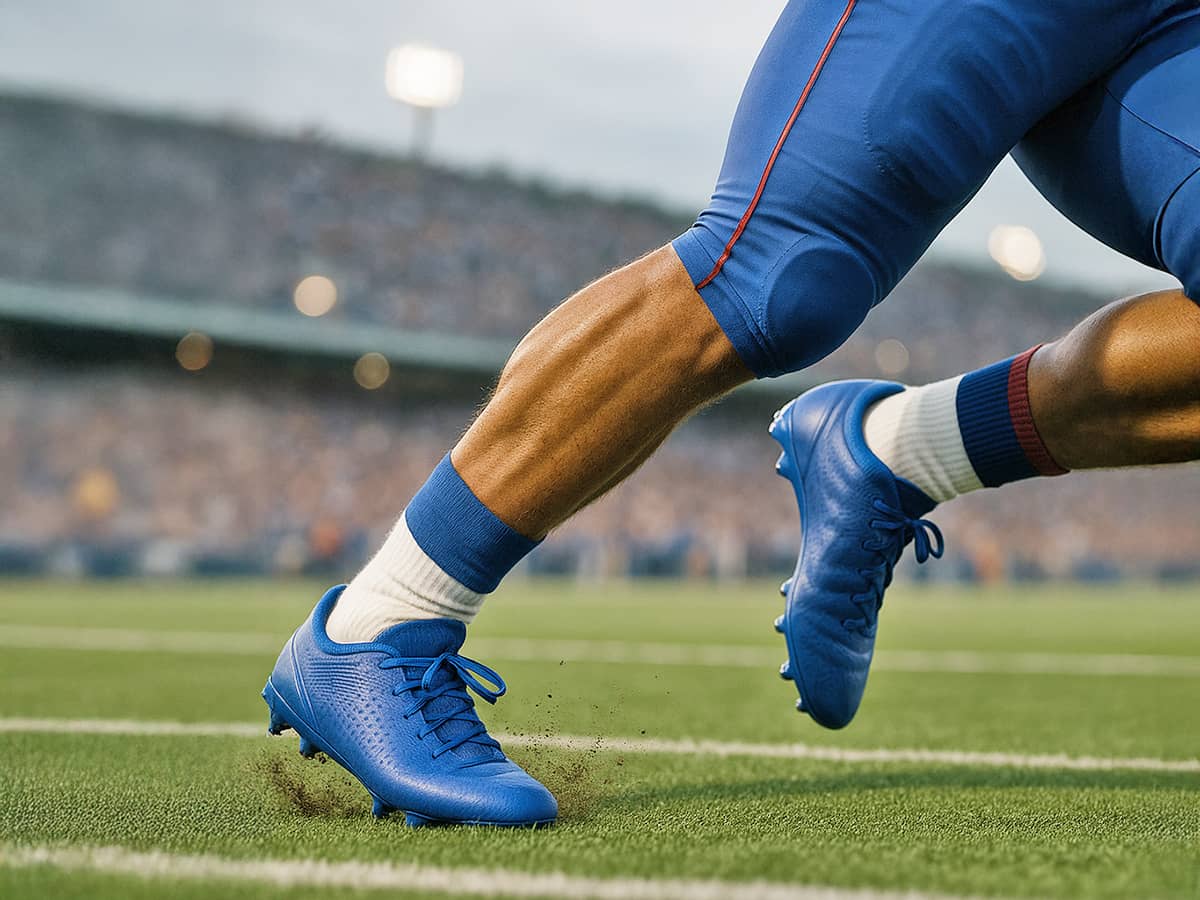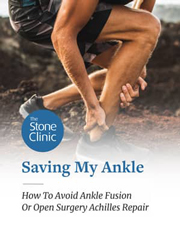Severe Ankle Injuries…What We Don't Know
Hear From Our Patients
Patient Avoids Ankle Fusion and Achieves Dream CareerThe open fracture dislocation suffered by the N.Y. Giants’ star running back Cam Skattebo reminds us of just how unique the ankle joint is. Here are a few highlights:

The ankle joint is a mid-size joint carrying the entire weight of your body with each step, and up to five times the weight of your body when running or jumping. This joint, remarkably, never develops arthritis unless it has been injured. Something unique about the ankle cartilage preserves its function for a lifetime. We, on the research and clinical side, are working hard to identify that protective component.
Once it is injured, however, all bets are off. If the injury is just a sprain of the surrounding ligaments and heals, or is repaired back to normal stability, arthritis does not occur. But if the ankle is left unstable, gives way during sports, or requires braces for stability, it’s similar to a car tire that is out of round: It wears down the articular cartilage surfaces and develops arthritis over time.
If the bones of the ankle are fractured, the forces incurred during the fracture damage the otherwise resilient cartilage cells, and arthritis can result. If the fractures are not reduced perfectly—to within a millimeter of variation from normal—the ankle develops arthritis.
If at the time of fracture the skin is broken, the risk of infection is high, and the degradation products of the bacteria can damage the joint and lead to arthritis.
If the joint is dislocated at the time of the fracture, the trauma to the surfaces and rupture of the supporting ligaments—despite rapid relocation and surgical fixation—often leads to arthritis.
In the case of football player Cam Skattebo’s injury, his dislocated ankle, open tibia fracture, and ruptured ligaments, followed by emergency surgery, all add risk on top of risk to the future of that ankle—whether or not he returns to his previous incredible level of sports performance.
Once arthritis in the ankle becomes severe, most patients complain of pain, loss of motion, and an inability to walk and run distances. They are most commonly offered an ankle fusion or, more rarely, an artificial ankle replacement. Our own practice is to remove the arthritic spurs and degraded cartilage, and graft the surfaces with an articular cartilage paste graft. We will be reporting on the long-term success of this procedure next year. Our current impression is that this approach is far better than a fusion. It improves motion, reduces pain, and returns many people to some levels of sports. Still, it does not create a normal ankle and will require additional interventions, whether injections or surgery, over time.
This is clearly a ripe area of research. First, though, it would be incredibly helpful to find the answer to our central question: What makes the ankle cartilage unique?
How to Avoid Ankle Fusion a BioAnkle
When experiencing ankle arthritis, patients are often told they need either an ankle replacement or an ankle fusion procedure. At The Stone Clinic, we've developed an alternative approach called the BioAnkle.
This surgical program biologically rebuilds the ankle joint, allowing patients to maintain the natural mechanics of their ankle and return to the activities they love—without the significant drawbacks associated with fusion or replacement procedures.



